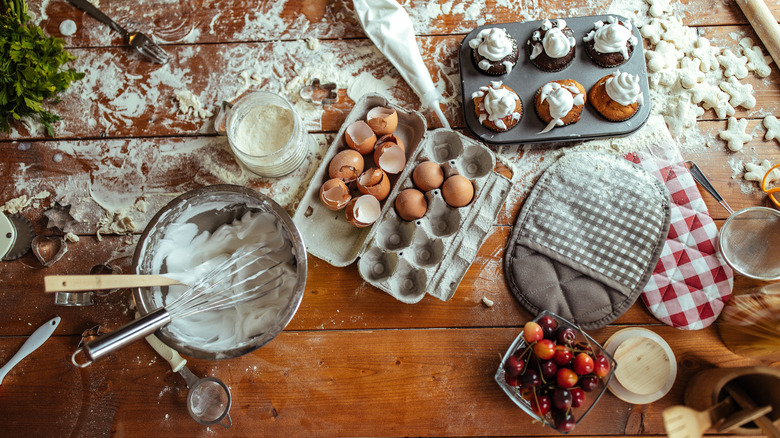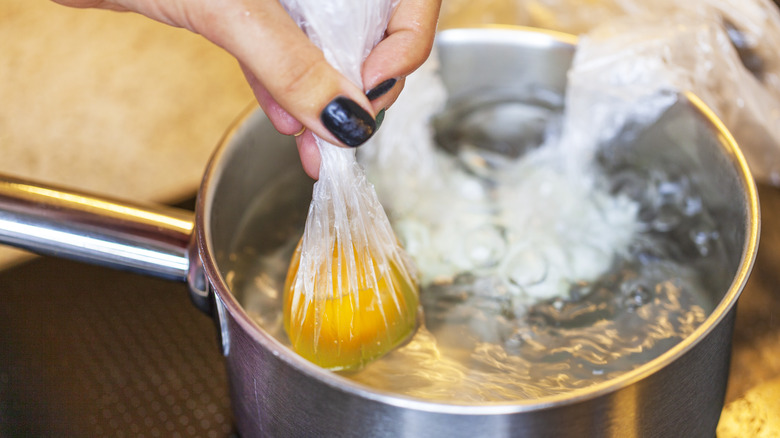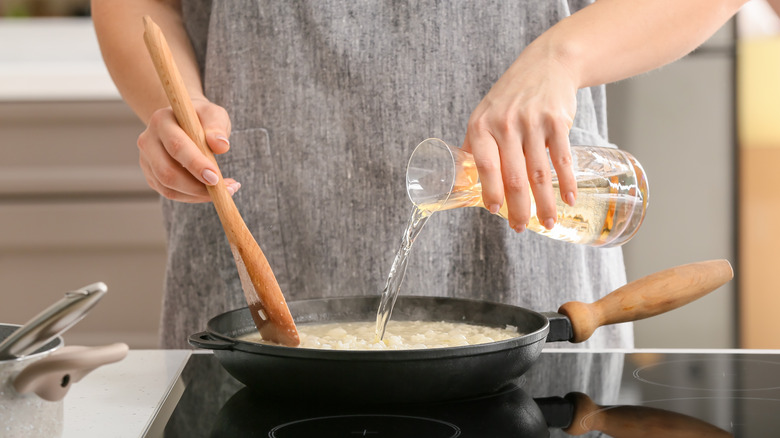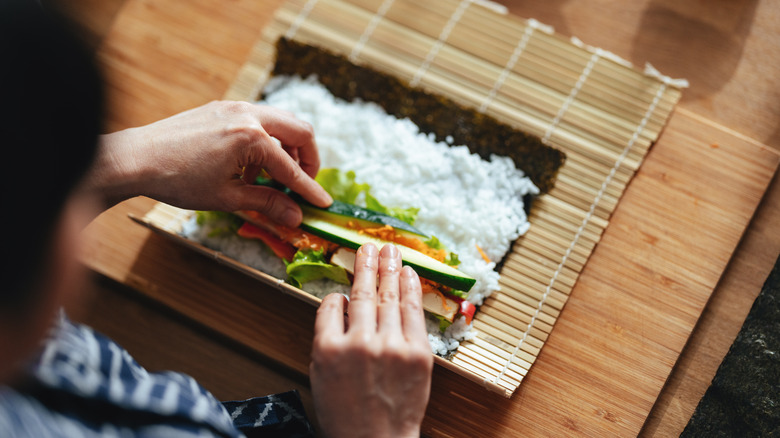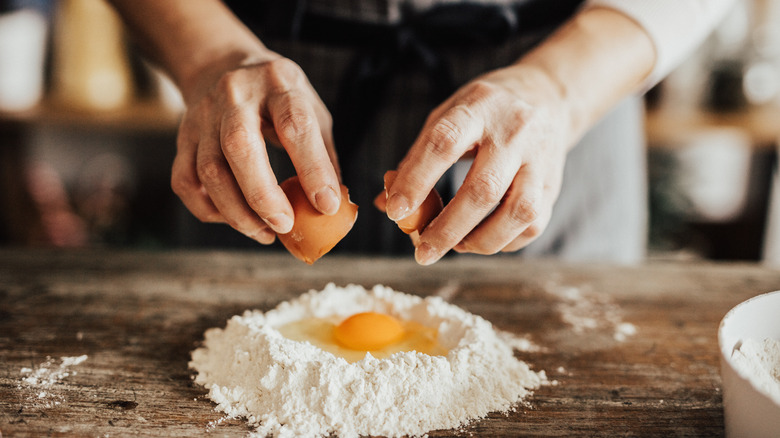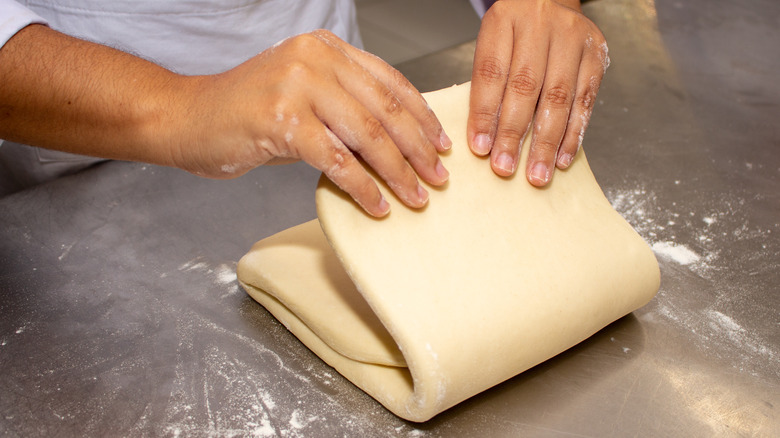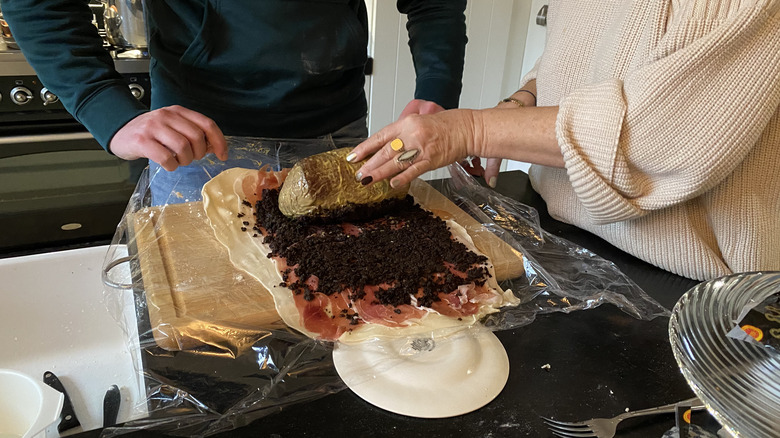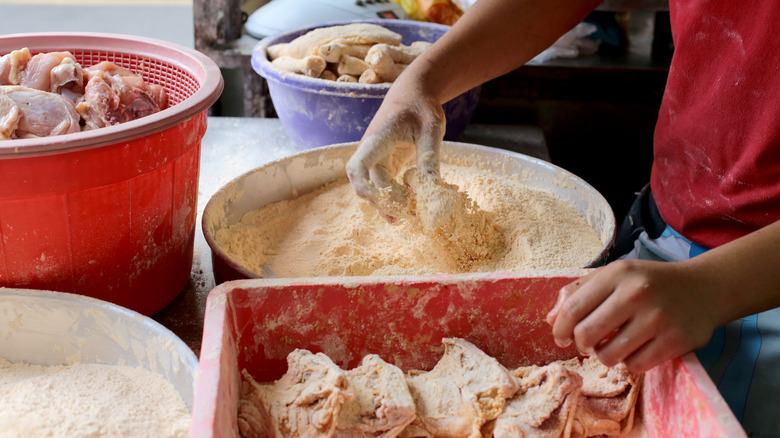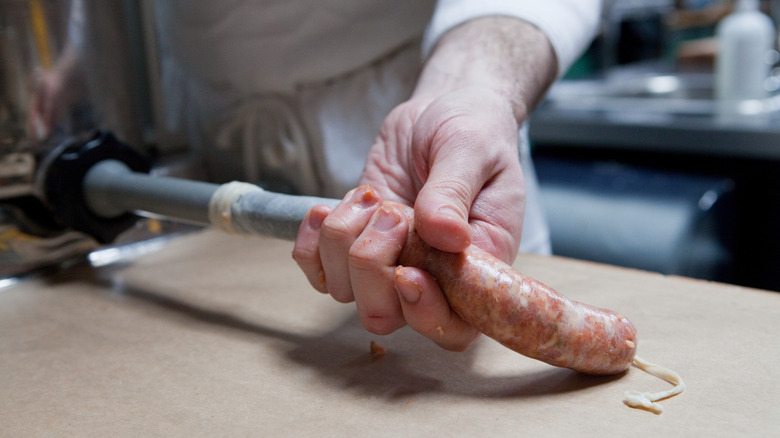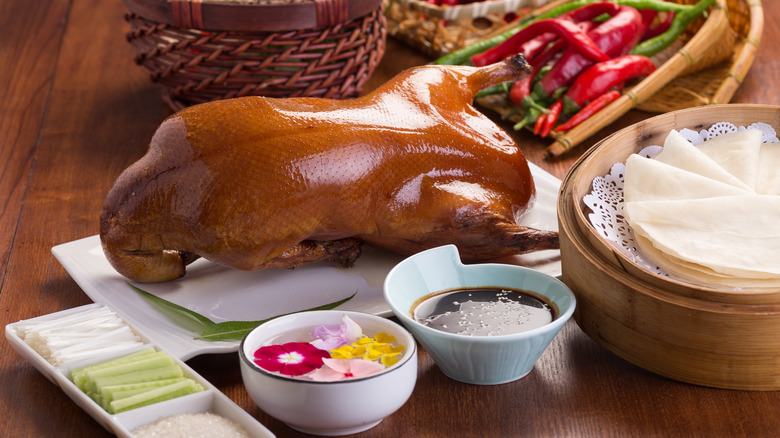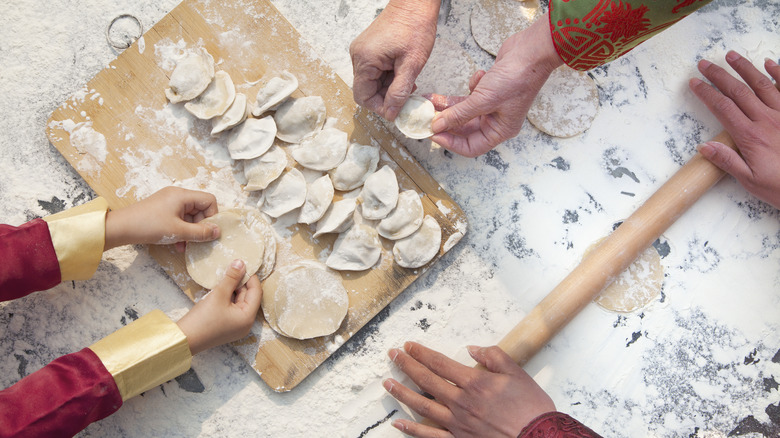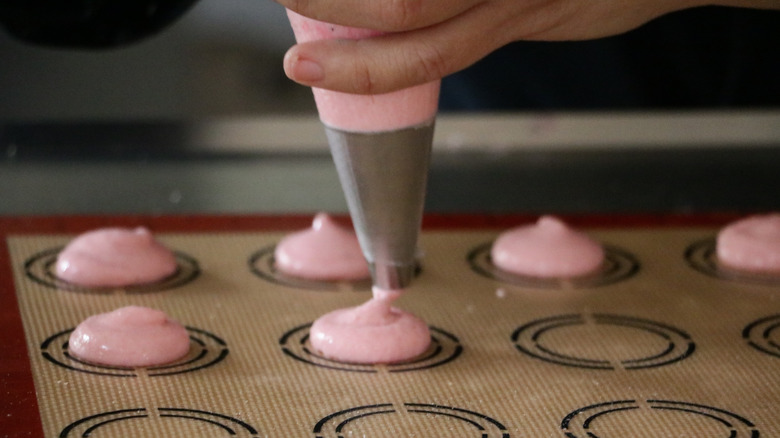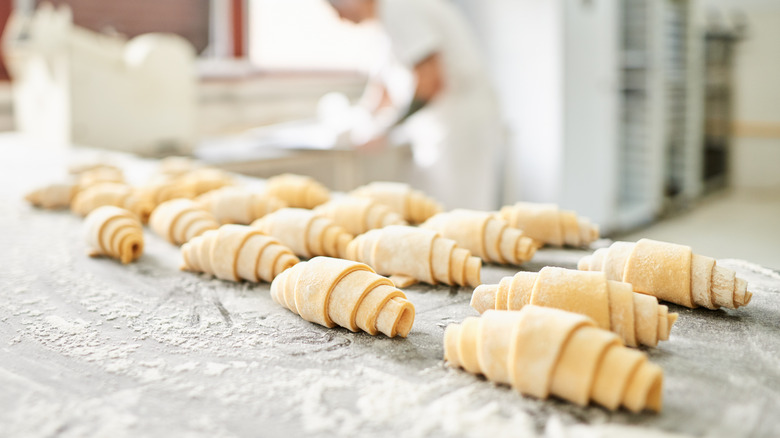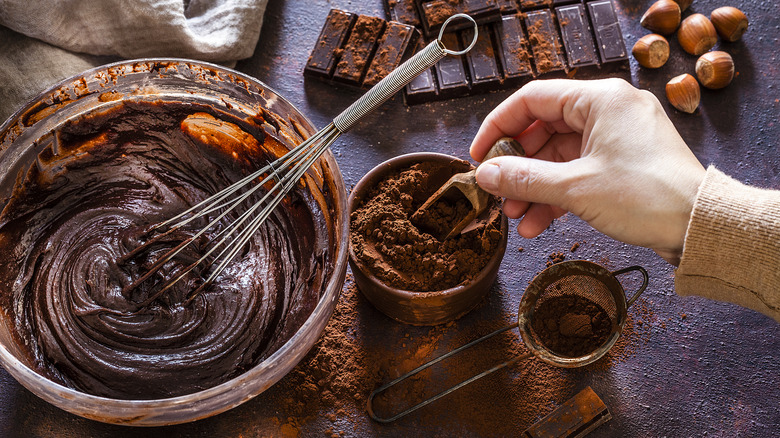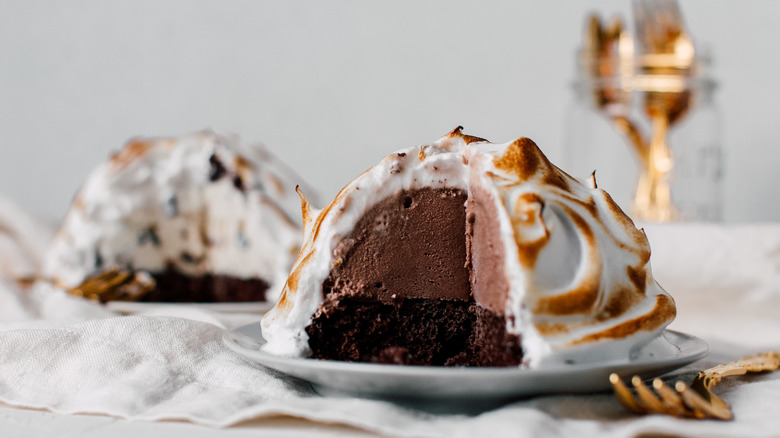14 Complicated Dishes That Aren't Worth Making At Home
We'd never want to discourage anyone from improving their culinary skills and trying out new recipes, but some dishes can be much more complicated than they seem. This list is somewhat subjective, and there might be entries that you consider worth the effort, even if others might not see things that way. However, these dishes all have challenging aspects that might make you think twice before trying them at home.
Ultimately, you have to weigh the costs of ingredients, specialist kitchen equipment, and your time, against the benefits of how much you're going to enjoy the final product. You'll also want to assess the risk factor — if you're lacking in technical ability or experience, what are the chances a mistake will ruin the entire dish? You can judge for yourself whether or not any of the dishes below are worth making at home, but in our experience, they're meals that are better enjoyed in a restaurant and made by professional chefs with the proper tools and best ingredients.
1. Poached eggs
Out of the myriad ways there are to cook an egg, poaching is easily the most fiddly. Your water temperature and timings have to be just right to avoid under or overcooking the egg and don't get us started on getting them in and out of the pan without them falling apart.
Yes, we know all the tips and tricks for poaching eggs — add white vinegar to help them hold their shape, keep swirling them in the pan, try cracking them into plastic wrap over a mug, and so on and so forth. Or, why not skip the fuss and invest in an "egg poacher" of varying complexity?
Because these are just eggs we're talking about. Poached eggs are delicious but is it really worth going through all that extra effort when you could just fry or soft-boil your eggs without the fuss? Unless you're already a poached egg master, we suggest saving them as a treat when you're at a great brunch place and sticking to the basics at home.
2. Risotto
Authentic risotto is one of the all-time comfort dishes — it's hot and creamy with the ability to pack in heaps of delicious flavors, plus it's extremely versatile. On paper, it's also pretty straightforward to make.
Aside from the specific type of rice required — usually Arborio — the ingredients aren't especially fancy or hard to find, and you're effectively just adding wine and stock to the rice so it absorbs all the deliciousness and takes on that velvety texture. However, you can't make risotto by simply simmering the rice in the liquids and coming back to the pan when it's ready. To get the rice to release its starches for the desired texture, you need to add the liquid one ladle at a time, stirring each time until the stock is fully incorporated. There are no breaks, and you can't take your eye off the rice. For a regular-sized batch, we're talking upwards of 20 minutes of ladle, stir, and repeat. What's more, if you're planning on making side dishes, you'll have to do these before you start on the risotto because your attention can't stray from the rice. Also, the best risotto, and most restaurant versions, are made using homemade stock rather than store-bought, so if you're aiming high, that's another long process to add to your risotto prep.
3. Sushi
There are few dishes that look and taste as elegant as Japanese sushi. Despite its evident complexity, you still might be tempted to ask yourself, "How hard can it be?"
Look at it this way – it takes around ten years of training to become a bona fide sushi chef, and most apprentices won't even touch a fish for the first year or so, instead spending every moment perfecting the rice component alone. Even then, it can take up to seven years before they're allowed to work with more expensive ingredients like tuna. Aside from the sheer amount of skill and knowledge required for prepping sushi, it requires niche, high-quality ingredients that don't come cheap and can be tricky to source. Not to mention the specialized tools involved, like bamboo rolling mats, premium knives, and utensils for preparing fresh fish. Then, you need a level of dexterity only achieved through intense practice to assemble the final dish, especially when working with nori — the dried edible seaweed — which can easily crumble without a delicate touch. By all means, give it a try for the experience, but don't expect to be whipping up fresh sushi on the regular once you've seen the amount of effort involved.
4. Homemade pasta
Given the countless varieties of pasta and the huge range of dishes you can make with it, it's a food that's hard to get bored of. Plus, it's easy to get hold of and quick and simple to make — all you need to do is boil it in hot water for the right amount of time depending on the type of pasta.
If you ever start feeling like pasta dishes aren't challenging enough and decide to make your own pasta from scratch, there are a few things to bear in mind. First, pasta is made with dough, and as we'll continue to point out in this piece, working with dough is never as simple as you think. Getting the egg-to-flour ratio just right is difficult but crucial to avoid ending up with a dough that's too dry or too sticky, and the mixture needs to be kneaded until it's smooth and elastic without becoming too dense. Then, the dough has to rest so the gluten structure can relax before it's rolled flat, and lastly, you have to portion and shape it into your desired pasta. The easiest way is to use a machine, but these aren't cheap and you're still going to be limited to a handful of pasta styles. Truthfully, you're better off just buying premium pasta from the store and perfecting your cooking times.
5. Puff pastry
Any sort of baking requires a different level of precision and skill compared to most other types of cooking, but pastry work takes things up a notch. Aside from needing pinpoint accuracy when measuring ingredients, it frequently takes experience with specific techniques and tightly controlled temperatures.
Puff pastry is particularly complicated because it requires carefully folding the dough multiple times over layers of butter. However, because the butter is responsible for creating air pockets for soft and flakey pastry as it melts in the oven, it can't be allowed to get too warm and soak into the dough during the folding. If the dough does start getting too warm, you have to stick it in the fridge until it's cool enough to work with again. If you're making a pie or dessert that calls for puff pastry, just pick up a few rolls of the ready-to-bake stuff from your local store. It's normally kept refrigerated, so you just need to let it come back up to room temperature before you unroll it to prevent the dough from cracking. You can even freeze the stuff for up to a month and defrost it as you need it, making it even more convenient, as you can always have some at hand.
6. Beef Wellington
English in origin, a well-made Beef Wellington is a stunningly rich and flavorful dish. Although, if you've ever made one, you probably found yourself wondering whether it was worth the time, effort, and cost.
The recipe calls for a quality cut of beef tenderloin, which is then coated in mushroom duxelles, swaddled in prosciutto, then wrapped in puff pastry. The duxelles helps absorb the moisture from the beef to prevent the pastry from getting soggy, so getting this aspect right is crucial if you want the perfect crust. Even assuming you're using store-bought pastry, once you've tackled the complicated assembly of your ingredients, cooking them is a fine balancing act. Ideally, you want the beef to be medium-rare so it remains juicy inside while getting the pastry on the outside golden brown. The larger the cut of beef you use, the trickier this part gets. At the end of the day, Beef Wellington is an expensive dish to attempt with a number of things that can go wrong, and even if you nail it the first time, the pay-off arguably isn't worth it.
7. Fried chicken
As simple as fried chicken looks, it's a deceptively complicated dish to make, and it could even be considered slightly risky to make at home. Truly delicious fried chicken also takes more prep time than you realize.
For the most tender chicken, you don't want to skip marinating it in seasoned buttermilk for at least four hours in the refrigerator, but preferably overnight if you like your chicken especially tender. Putting together a breading mix isn't too tricky if you're confident with your seasonings, but crumbing the chicken is time-consuming and messy, and it can take time to ensure every piece is thoroughly coated. With the prep out of the way, it's time to actually fry the chicken, which involves using larger-than-usual volumes of hot oil, especially if you want to fry multiple pieces at once. The fire risk of the oil means you need to keep a close eye on your chicken as it cooks, and you'll have to keep turning each piece to ensure it's evenly cooked while avoiding getting burned. Professional kitchens are far better equipped for producing fried chicken, so it's best to leave them to it.
8. Sausages
We're not going to try and argue that handmade sausages aren't superior to processed store-bought ones, but you should know what you're getting into if you try to make them yourself. First, you need to start with the perfect filling.
It's not enough just to get the flavors right for your sausage filling, as you also need to make sure it contains enough fat. You'll want to aim for at least 25 percent fat, which is still half the amount most commercial versions contain, and you may need to add more fat to your meat mix. Next, you'll need to source and stuff your sausage casings which is delicate work, often requiring specialized equipment if you want to ensure consistency and avoid bursting the skins. While there's certainly satisfaction to be had in making your own sausages from scratch, you're better off heading to your local butcher. Here, you'll be able to buy handmade sausages for a fraction of the price in the knowledge they're fresh and professionally made.
9. Peking duck
Peking duck is a centuries-old recipe that's famous for its succulent meat and beautifully crispy skin. The trick to achieving this precise juxtaposition of textures is letting the duck air dry for long enough that the flesh and skin begin to separate so that fat can melt away when it's roasted, and traditionally, chefs would expedite this process by pumping air between these layers.
Herein lies our first issue. Traditionally, after cleaning, salting, and trussing the duck, it needs to be hung up to dry for at least a few days. You can leave it to dry out in the fridge to cut this time down a bit, but a lot of fridges don't have enough space in them to hang a whole duck, and there's a chance that off-smells from other foods might get absorbed into the meat. Before roasting, you'll need to carefully concoct the Chinese sweet and sour glaze to coat the duck, then comes the cooking itself. Even with a properly dried duck, you'll need to keep a watchful eye on your oven to guarantee a crispy skin and tender center and use a meat thermometer to check the internal temperature. Finally, it takes a steady hand to expertly carve Peking duck into the thin, even slices the dish usually calls for.
10. Filled dumplings
Whether you're a pork or veggie fan, steamed or fried, it's hard not to love filled dumplings. However, given how quickly they are to snack though, making them yourself might leave you wondering whether it was time well spent.
Once again, we start with dough — this time, it needs to be soft and pliable without being too sticky, something that takes practice to get right. Then your filling needs to be the right consistency, if it's too dry or moist, it will affect the dough as it cooks. There are a few different methods for wrapping dumplings, but all of them are slightly fiddly. Every dumpling needs to be perfectly sealed, and you'll likely find yourself tired of folding dumplings if you're making a large batch. And, let's face it, there's not much point in making a small batch. Finally, it can be tricky to judge the cooking times for dumplings, with different fillings and styles requiring adjusted timings to avoid over or undercooking them. Being able to make dumplings is a worthwhile skill, but know that it's something that will take plenty of attempts to master.
11. Macarons
Not only do macarons require us to dive back into the daunting and delicate world of baking, but they come with a reputation among even the most experienced pastry chefs as being notoriously complicated to make. Even if you're an expert when it comes to precisely measuring your ingredients, you'll need to be well-versed in more than a few dessert-making skills.
First, you'll need to be able to whip up a reasonable egg white meringue for your batter, then you'll need to be able to fold in your dry ingredients with a technique so specialized that it's called "macaronage." Once you've got your batter ready, you'll need to be confident enough with a piping bag to create perfectly equal macaron circles on your baking sheets. Even if you get this far, you then have to make sure they're baked with an incredible degree of accuracy to stop them drying out and baking or failing to harden. If your oven's unreliable or has cold spots, forget about making macarons – they don't always play well with convection ovens either. If you're looking to improve your baking skills over time then they're a great goal to aim for, but they're something you'll need to build up to.
12. Croissants
On the surface, croissants might not seem too complicated to make at home, but achieving that deliciously airy texture with crispy flakes of pastry that are buttery, not oily, is no mean feat. The process shares some similarities with making puff pastry but has a few more technical aspects thrown in.
First, the ingredient list is slightly more complicated as it includes an active yeast component that needs time to start its feeding process before you can fully mix the dough. Then the dough needs about an hour in the fridge to cool down before you can laminate it by folding in the butter like you would with puff pastry. After this painstaking step, you have to roll out your dough, cut it into triangles, and start shaping them into their crescent croissant shapes. Again, this is fiddly and requires careful temperature control to avoid the butter melting prematurely. In our experience, it's better to buy croissants from a local baker and bake or reheat them at home. As long as you reheat them in the oven and not the microwave or toaster, they'll look and taste as good as if they were freshly made by a pro.
13. Brownies
While macarons and croissants are at the expert end of the baking skill scale, brownies are far less daunting, and it's not hard to make passable, if not perfect, brownies. That said, most folks are missing out on better brownies by making them from scratch.
The secret to decadent, fudgy brownies is simple — use store-bought brownie mix. Now, we do want to tweak the recipe on the box a bit to lift them to a professional standard but we're not talking about anything too fancy. To start, instead of using whole eggs in your brownie batter, just use the yolks for a denser, chewier texture and add more than the recipe calls for. Instead of water, use milk, and replace the required oil with butter. Voilà, you've saved yourself a ton of time and effort and haven't had to worry about carefully measuring out your dry ingredients. With the brownie mix taken care of, you're now free to tweak the recipe however you like in terms of added ingredients like nuts or chunks of chocolate.
14. Baked Alaska
Despite being a delicious dessert, Baked Alaska is the sort of cake that makes you wonder why someone attempted to create it in the first place. Like macarons, it often tops the list of the most daunting baking recipes.
The bottom layer of a Baked Alaska is usually just regular cake, something that's not too tricky to make — so far, good. However, the next layer is ice cream, which has to be cold enough to keep its form but soft enough to mold into shape. If that wasn't enough, we need to bust out our meringue-making skills once again, because a Baked Alaska is then coated in the stuff. The final stage is browning the dessert's meringue exterior under direct heat, usually under a broiler, which isn't always the easiest piece of equipment to use. You can probably guess that precise timing and temperatures are critical when you're putting ice cream in the oven and don't want it to melt. Like macarons, this can be a great recipe to test your baking skills after plenty of practice, but not one to try without prior experience.

